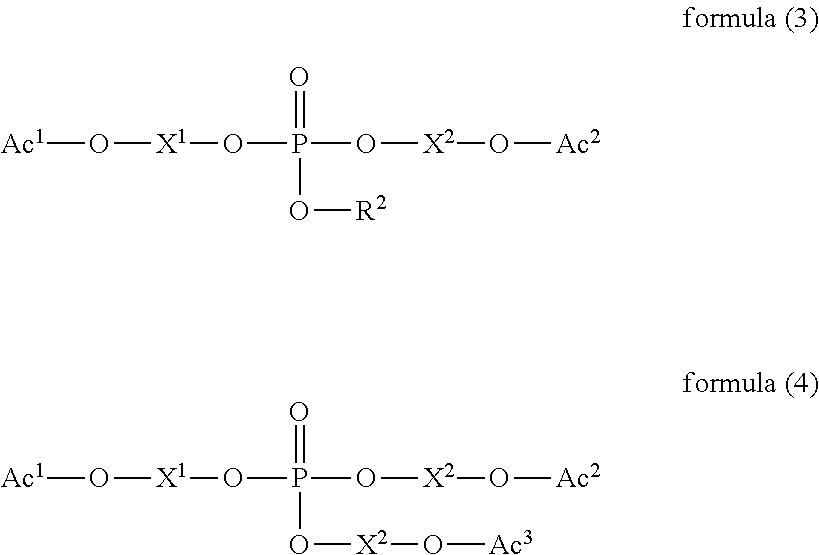Dispersion-type electroluminescence device
a technology of electroluminescence and dispersion, which is applied in the direction of discharge tube luminescence screen, discharge tube/lamp details, luminescent compositions, etc., can solve the problems of non-uniform electric field and insufficient durability, and achieve high luminescence brightness, extended life, and high brightness
- Summary
- Abstract
- Description
- Claims
- Application Information
AI Technical Summary
Benefits of technology
Problems solved by technology
Method used
Image
Examples
example 1
[0084]A first layer (an insulating layer) and a second layer (light emitting layer) shown below were formed in that order on a 70 μm-thick aluminum electrode (back electrode) by applying the respective coating compositions for forming a layer (shown below) having the viscosity controlled with dimethylformamide and drying at 110° C. for 10 hours.
[0085]A 75 μm-thick polyethylene terephthalate film, to which indium tin oxide (ITO) is sputtered to make 40 nm-thick transparent electrode, and the light emitting layer as second layer were brought into contact so that the transparent electrode side (conductive plane) faces to the aluminum electrode and press bonded using a heat roller at 190° C. in a nitrogen atmosphere.
[0086]The compositions of the first and second layers are in mass per square meter of the EL device fabricated in Example 1.
First layer (insulating layer, containing no red conversion material; thickness: 30 μm)
Cyanoethyl pullulan14.0 gCyanoethylated polyvinyl alcohol10.0 gB...
example 2
[0095]Phosphor particles designated G to J were prepared in the same manner as for phosphor particles A, except for adjusting the amount of copper sulfate so that the resulting phosphor particles might have the Cu content shown in Table 3 below. The Cu content was determined by dissolving the particles in aqua regalis and analyzing the solution by ICP emission spectroscopy. The Cu contents in Table 3 are given in mole percent relative to Zn.
TABLE 3Particle Size(μm) at10% and90% of CumulativePhosphorParticle SizeParticlesCu ContentDistributionDesignation(mol %)D10D90D90 / D10A0.0914282.0G0.1114292.1H0.1314312.2I0.1615302.0J0.1715302.0
[0096]EL devices designated 107 through 110 were fabricated in the same manner as in Example 1 and evaluated in initial luminance and lifetime. The results obtained are shown in Table 4.
TABLE 4RelativeLuminanceEL DevicePhosphorRelative Initialafter 300 hrDesignationParticlesLuminanceDriveRemark101A10072invention107G10480invention108H11083invention109I11490...
example 3
[0098]An EL device was fabricated in the same manner as for EL device 108 of Example 2, except for incorporating into the insulating layer 3.0 g / m2 of a red light-emitting fluorescent dye SEL 1003 from Shinloihi Co., Ltd. The resulting EL device emitted white light with a color rendering index Ra of 86, equal or superior to the light of common fluorescent lamps.
PUM
 Login to View More
Login to View More Abstract
Description
Claims
Application Information
 Login to View More
Login to View More - R&D
- Intellectual Property
- Life Sciences
- Materials
- Tech Scout
- Unparalleled Data Quality
- Higher Quality Content
- 60% Fewer Hallucinations
Browse by: Latest US Patents, China's latest patents, Technical Efficacy Thesaurus, Application Domain, Technology Topic, Popular Technical Reports.
© 2025 PatSnap. All rights reserved.Legal|Privacy policy|Modern Slavery Act Transparency Statement|Sitemap|About US| Contact US: help@patsnap.com



